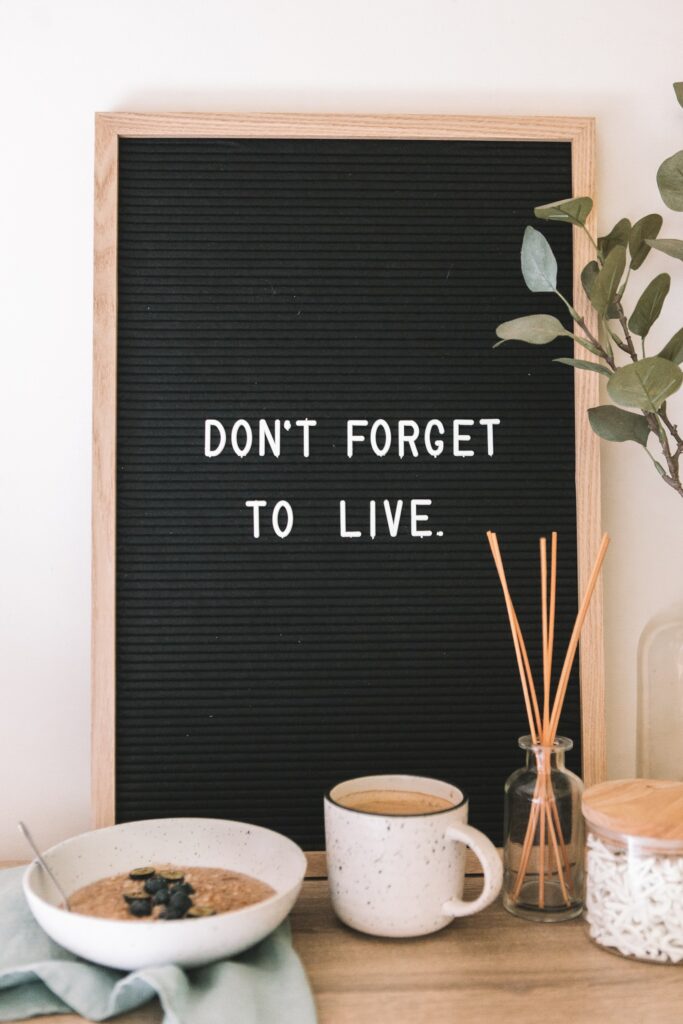Bad habits die hard. It can be very difficult to overcome old habits, especially if we’ve been practicing them for a long time.
In order for us to change we have to embrace discomfort. Change requires us to get outside of our comfort zone into a world of new possibilities.
When we want to set new habits and resolutions that last longer than the first temptation to break them, certain steps can prove helpful.
1. Be very specific
Specificity is key. If we make our resolution too broad or vague we will find it harder to stick to, and easier to find excuses and loopholes. Here’s an example.
Let’s say you have a goal of losing 30 pounds. It might sound specific to have a clear target weight, but there’s still lots of room for ambiguity. For instance, in what time frame do you want to lose those 30 pounds? Maybe you have a specific target date in mind?
But more important still: What specific practices and lifestyle changes will you be incorporating into your life to help you succeed with this goal?
The goal of losing 30 pounds will be easier to achieve if you frame it like this:
“I will lose 30 pounds within the next 12 months.
I set the intention to lose 2.5 pounds per month.
I will reduce how much processed sugar I eat.
I will do 20 minutes of high-intensity interval training every other day.
I will take the stairs instead of the elevator at work etc…”
When you get more specific, you give yourself not just a target, but also a guide for how you’ll reach it. The more specific you can get, the higher your possibility for success.
To apply it to another example, maybe the resolution is to be less angry. Here is how that could look:
“I commit to being a less angry person.
Every morning, I will practice a deep breathing exercise before I begin my day.
When I sense anger rising, I will take a step back before reacting.
I will look for the positive side of things instead of focusing on the negative.
If my anger persists, I will visit a coach or counsellor.“
2. Have a written reminder

When you want to commit to a new habit or resolution write it down on a piece of paper and place it where you will see it regularly.
Typing it on your phone or computer can easily fall out of your awareness in amongst the files and notifications, so writing it on paper and placing it somewhere you’ll see it often, like on the back of your front door, or next to your bathroom mirror, is key.
It also really helps to add a reason for why the resolution is so important to you. This simple step helps you stay committed and can act as a deterrent when you’re tempted to fall back into an old bad habit. For example:
“I want to be a less angry person, because I dislike the way anger makes me feel. Anger undermines my efforts to have good friends, and damages my reputation.”
3. Use positive reinforcement
You can use the technique of positive reinforcement to ensure incremental success when it comes to setting a new habit or sticking to a resolution. Rewarding yourself whenever you make a step towards actualising your goal will help keep you motivated.
Let’s use the losing 30 pounds example. One way to give yourself positive reinforcement is to enjoy your favorite food after a high-intensity workout (within reason of course). Another is to let yourself enjoy an activity you love (e.g. going to the movies) after you attain one of your smaller goals (losing the 2.5 pounds after a month). One other way is to simply tell yourself, “Good job!”
Use what works for you, because everybody is different. Keep the idea of positive reinforcement in mind if you need a little extra motivation with your new habit or resolution.
4. Create a Plan
In point 1 we discussed the importance of being specific in the steps you’ll take towards achieving your goal. The next level that I strongly recommend is to create an actual plan.
Using our example of losing 30 pounds, you can go beyond simply setting micro-targets of losing 2.5 pounds per month, doing HIIT, and reducing sugar intake.
You can either write out an entire plan yourself, or use a habit tracking app, such as Streaks, Tally or Habitica which allow you to monitor your progress as you check off specific tasks and habits once completed every day.
Better still, work with an expert or a friend to devise your plan. That will provide the added incentive of accountability. You could go all in and hire a personal trainer or a nutritionist, but if you don’t have the funds to invest in professional support, maybe you have a friend, colleague or family member who is really into fitness or nutrition that you could discuss it with.
Having a detailed plan makes it so much more likely that you’ll reach your goals, because it gives you concrete steps to follow each day. As humans, we appreciate clear direction, and not only will having a plan give you the reassurance that you’re on track for your goals – it will also make it readily apparent when you’ve strayed off course.
5. Identify what triggers your old habits
A trigger is something that prompts a certain behaviour, and in this context, we’re talking about prompting old habits.
If you have set a plan to replace your habit of getting angry with a new habit of staying in a space of neutral awareness you could find yourself blindsided by a trigger.
Let’s say that you have a low tolerance for people making excuses or lying to hide something they have done wrong. You sense a colleague is doing just this and you immediately feel the anger and rage boiling up inside. You lash out at them, creating an incredibly tense situation.
By practicing self-awareness you can learn to become aware of your triggers so that you can catch yourself before you react in a very overt way. Be aware of how you feel and what made you feel that way. Ask yourself whether your reaction will be helpful or hurtful. This is easier said than done, which is why you may need some assistance.
Mindfulness meditation can help. This is a meditative practice that helps you become aware of thoughts and emotions and gives you the breathing space to change the way you react before it is too late.
You will reduce the level of impulsiveness that you experience, helping you avoid allowing a trigger to take control over you.

Start setting new habits and resolutions
We all have bad habits we would like to overcome and replace with better ones. We tend to set resolutions for ourselves, year after year. Yet, we still hold onto our bad habits.
To succeed in setting new habits and resolutions we need to create action steps to follow. When you do, you will be able to imprint new and better habits over those old undesirable ones.
You will be able to actualise your resolutions for real and become a new and improved You.
If you’re really committed to transformation and want to make 2020 your best year yet, download The Power Up Your Life Workbook.
We’re offering it FREE to only the first 1,000 downloaders who also sign-up to our regular free email magazine, The Power Up.




